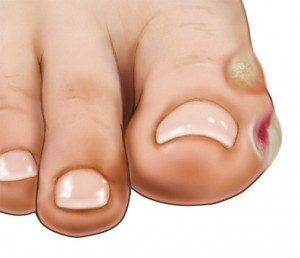Blisters on feet can be painful and bothersome. Blisters are small pockets of fluid that form on the upper layers of the skin (the epidermis).
The fluid inside a blister is called serum or plasma. This fluid is usually clear, but it can also be red if the blister is filled with blood, or yellowish green if it is filled with pus, indicating an infection.
Blisters may appear on one foot or both feet, and they do not discriminate based on gender, age, or race.
Blisters on feet can be caused by numerous things, including:
- Forceful rubbing or friction on the foot
- Bone spurs or exostoses
- Burn
- Freezing
- Chemical exposure
- Infection
- Allergic reaction
- Pinching skin
- Medical condition
- Foot perspiration
- Fungal infections such as Athletes foot
- Medical conditions that cause blisters, such as dyshidrotic eczema, chickenpox, and herpes
In most cases, the blister is due to improper footwear; shoes that are too big tend to cause friction between the foot and the shoe. Brand-new shoes can also cause blisters. Inside a shoe is the perfect environment for a blister to form.
Exposure to extreme hot or cold temperatures may also result in blisters on your feet. These blisters usually last a few days. Exposing your feet to chemicals such as cosmetics, detergent, or solvents can also result in blisters. This is known as contact dermatitis.
Most blood blisters occur after the skin has been pinched or squeezed. Blood blisters form when a blood vessel that is close to the surface of the skin breaks or ruptures, allowing blood to gather just under the skin.
If there is an infection present, you may see that your blister has filled with pus and is yellowish or greenish in color. Medical conditions such as dyshidrosis (a form of eczema), herpes, and chickenpox can also cause blisters on one’s feet.
Blisters are very common among athletes. Diabetics who have neuropathy should examine their feet extra closely for blisters. You may not be able to feel the blister forming, so daily checks should be performed.
What Are the Symptoms of Blisters on Feet That I Should Know About?
If a blister is forming, you’ll probably know it, but here are some symptoms that may indicate that a blister is forming on your foot: 
- Redness of skin
- Tenderness
- Pain when in you are motion
How Can I Treat Blisters on My Feet?
The best way to treat your blister will depend on the type of blister it is. Blood blisters should never be drained, nor should pus-filled blisters. Most experts say to leave the blister alone and let it pop on its own.
Some blisters will heal themselves without intervention. If the blister is located on a weight-bearing part of your foot, however, you may want to consider the following steps:
1. Wash your hands and the blister with soap and water
2. Swab the blister with iodine or rubbing alcohol
3. Sterilize a pin or needle (this can be done with a flame or rubbing alcohol)
4. Make a small hole at the edge of the blister
5. Drain the fluid, but leave as much of the skin there as possible
6. Clean the blister with a sterilizing wipe
7. Apply an antibiotic ointment
8. Bandage the blister
9. Wrap tape over the top to provide extra support
You don’t want to turn your blister into an open wound. This will make it more susceptible to infections. Infections in your feet can lead to further complications. To avoid this, it’s very important that you properly drain the fluid.
If you feel you cannot do this on your own, you should see a doctor. If there is an infection, your doctor may prescribe you antibiotics.
Never attempt the steps above if you see symptoms of infection, such as pus, redness, increasing pain, or warm skin. If you have any of these symptoms, seek medical attention.
First aid should not be necessary unless the blister breaks or the raw skin has been damaged by friction. If this is the case, treat the blister in this manner:
1. Wash the blister and surrounding area gently with soap and water. Do not poke at the blister.
2. Cover the area with a sterile gauze pad and tape the pad in place.
3. If the blister was caused by a chemical, is larger than two inches across, or occurs on a location other than your feet (e.g., your hands, face, or genitals), see your doctor immediately.
How Can I Prevent Blisters on My Feet?
In most cases, the blister is caused by friction due to improper footwear. Preventing blisters on your feet can be as simple as making sure you buy shoes that fit you properly and allow your feet breathe while you are wearing them.
Here are some additional prevention tips:
- Keep your feet dry; use foot powder to help with this if needed.
- Avoid wearing wet shoes.
- Change your socks on a regular basis.
- Take care of your footwear.
- Try to wear protective footwear in extreme temperatures.
- Avoid walking barefoot for long periods.
- Apply sunscreen to your feet if they will be exposed to the sun.
- Be sure to control any additional medical conditions you may have.
- Use tape to prevent blisters, especially if you feel friction.
Talking to Your Doctor
Here are some questions you may want to ask your doctor about blisters on your feet:
- What type of soap should I be using to wash the affected area?
- Can I bring my shoes in during another appointment so you can tell me if they are made of the right materials and if they fit me properly?
- What additional preventive measures can I take?
- Will the blister prevent me from participating in my normal daily activities?
- What items should be in my first-aid kit?




